Could there be a more exciting getaway than to the Land of Fire and Ice? With breathtaking views, a myriad of natural wonders, and exciting contrasting terrain, it’s no wonder that adventure and jaw-drop moments can be found around every corner. But since Iceland is known for being a destination that’s on the more expensive side, many want to know when the cheapest time to go to Iceland will be.
Well, if you’re someone like us who believes the best way to explore the island is via road trip, then stick around – you’ve already discovered half the secret to an affordable trip to Iceland. However, after reading our guide with all the insider info, tips, and tricks, you’ll be able to have an absolute kick-ass adventure without breaking the bank. So, without further ado, here’s what you need to know:
Why Visit Iceland on a Budget?
Well, why not?! What can be better than having a once-in-a-lifetime experience without having the constant concern about how to fix the finances again once you return home? Since Iceland is known as a destination with some of the highest travel costs and expenses relating to a trip to the island, this is a very real concern. But traveling Iceland on a budget and exploring the smart way, also has other benefits:
- Iceland has much more to offer than all those expensive attractions and activities found in the official guidebooks. In fact, many times it’s our hidden (and often FREE!) gems that really take your breath away.
- Finding those hidden gems often involve roping in the insights of the locals. This means that you get interactions and get to explore a side of the island that very few visitors do.
- Experiencing the side of the island from a more local perspective means that you not only avoid pricier attractions and activities, but also the crowds and traffic that go hand in hand with many of the most famous mainstream sites.
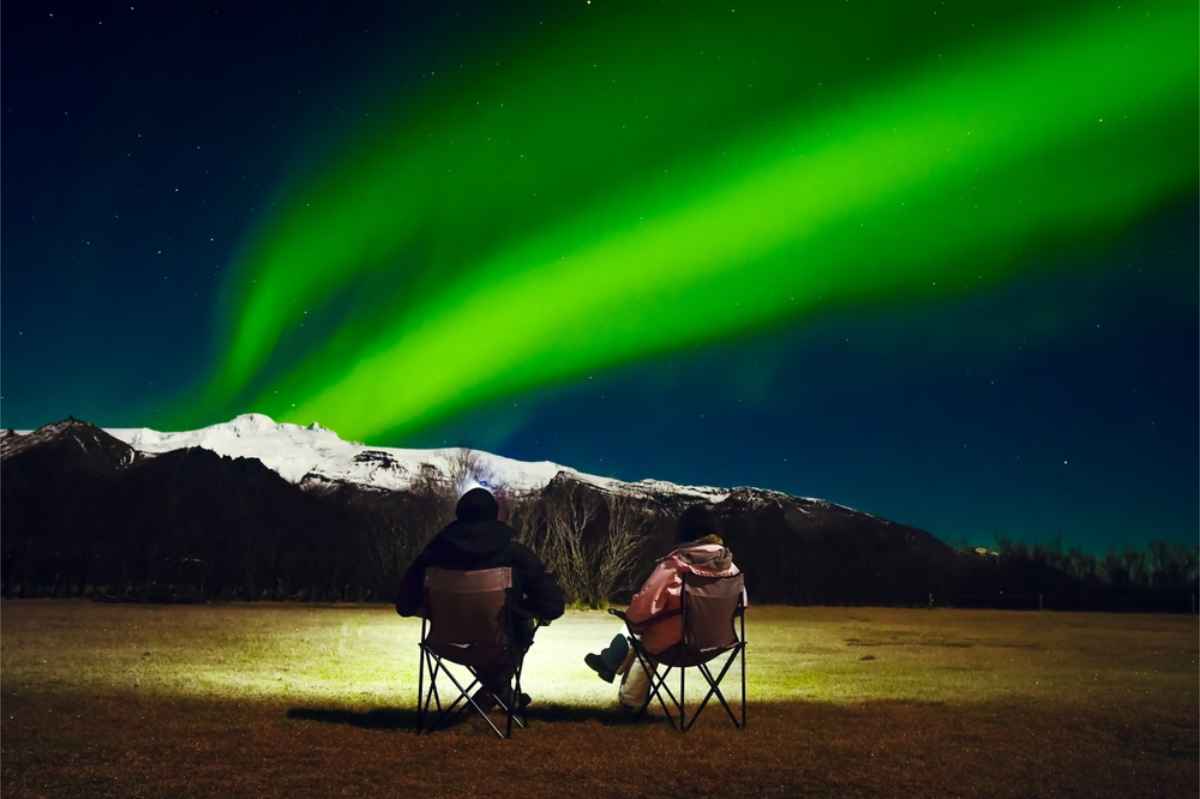
When is the Cheapest Time to Visit Iceland?
There are quite a few factors to consider when determining the cheapest time to visit Iceland:
The Cost Calendar (a Quick Overview)
As you may have already guessed, the cheapest time to travel to Iceland is usually during what is considered the off-season here in Iceland. This period can essentially be divided into the following:
- The winter (November to March).
- Our shoulder months (April, May, September, and October).
During these months, you can expect to find the lowest prices on everything from airfare and accommodation to transport and activities. Of course, depending on the type of Iceland experience you’re looking for, traveling to Iceland during our cheaper months may come at a price. Check our seasonal breakdown below to see if our cheaper months can work for you:
|
Season |
Months |
Costs |
Crowds |
Weather |
Daylight Hours |
Available Seasonal Activities |
Unavailable Activities |
Can You Go Camping? |
Natural Phenomena |
|
Summer |
June to August. |
Very expensive due to peak season pricing. |
Very busy due to peak season crowds. |
The best weather you get on the island all year round. You can expect the highest temperatures and the mildest weather conditions overall during this period. |
This is the season with the most daylight hours (21 to 24 hours). |
All sorts of outdoor activities, such as hiking, canoeing, horseback riding, etc.
Extra special wildlife sightings such as the Iceland Puffins and migratory birds, and whale species.
You can road trip all around the island, including the Highlands and the Westfjords, since all roads, including the F-roads, are open. |
Exploring the ice caves.
Going skiing or snowboarding. |
Yes. All campsites will be open and operating at full capacity. The Camping Card is also valid during this time, which means additional savings on camping and gas. |
You can experience the Midnight Sun for a couple of days in mid-summer in June. |
|
Winter |
November to March. |
The cheapest months to visit Iceland. |
The least busy time on the island, except for the period over the festive season and up to New Year's. |
The time our weather conditions are the harshest and most extreme. Although Iceland looks like a winter wonderland straight out of a Hallmark movie, this season is characterized by ice, snow, blizzards, and winds that can literally rip car doors off. |
This is the season with the fewest daylight hours (4 to 5 hours). |
Ice cave exploring.
Skiing and snowboarding.
Dog-sledding across the snow. |
All sorts of outdoor activities, such as hiking, canoeing, horseback riding, etc.
Extra special wildlife sightings such as the Iceland Puffins and migratory birds, and whale species.
Not the most ideal time to go road-tripping. Road conditions are challenging; there are annual road closures as well as sudden road closures due to weather conditions. Places such as the Highlands and the Westfjords are no-go areas during this time.
|
No. Many campsites are closed throughout this time, and even in a camper, the cold and extreme weather conditions can make things really uncomfortable. The Camping Card is also not valid during this time period. |
This is the ideal time to spot the Northern Lights dancing across the sky. |
|
The Shoulder Seasons |
April, May, September, and October. |
While not the cheapest, these are also super affordable months to visit Iceland. |
While not the least busiest time on the island, it’s still months with much fewer crowds than during our peak season period. |
Interesting weather conditions, since you’ll often find a strange mix of two seasons (depending on the month you choose, of course). For example, April can still have a couple of flurries of snow (especially in the north), and there will still be patches of unmelted ice. Yet temperatures are rising, and weather conditions are milder in general. |
This varies based on the months you’ll be coming. April and May range between 13 and 20 hours a day. September and October range between 14 and 8 hours a day. |
Just like the weather, shoulder months can be a weird and wonderful mix of different seasonal activities. For example, while not quite winter on the island, you might be able to already kick off the ski season in the north from October, and while already technically spring on the island, you can still catch some ice caves open in April.
You can still catch our extra special wildlife sightings, depending on when you visit. From late April to May, you can catch the Puffins. From April to September, you can catch the migratory whales, and in April and May, you can catch all sorts of interesting migratory bird species.
If you time it just right, you can still road trip the island unrestricted, with all roads and routes being open. This can be done in late May and early September. |
Yet again, this will depend on when you visit. For example, visiting the island in late May or early September means no ice cave exploration. However, during most of these months, except for perhaps early April and late October, you can still take on a few outdoor adventures comfortably.
As you can see from the column on the left, there are times when certain extra special wildlife sightings are also no longer possible.
From late April till early October, road conditions are pretty pristine, which means that you can road trip without turning into a nervous wreck. Just keep in mind that our annual road closures, which include the F-roads and affect exploring places such as the Westfjords and the Highlands, already occur from mid-September and lasts until late May. |
Yes. Most campsites are open, even though they may not be working at full capacity. Some campsites may require you to make prior arrangements for camping/parking during these times, so pop-in overnight stays may not be as simple as during our peak season. |
In early April and late October, you may still be able to spot the Northern Lights, especially in the northern regions. |
Low Season vs. Shoulder Season: What’s the Difference?
As you can see from our comparison table above, the biggest differences between the low season and our shoulder season are the following:
Low Season:
- Wintertime from November to March (except the festive season to after New Year's).
- This is by far the cheapest time during our off-season to visit Iceland.
- The go-to for all winter activities.
- The least amount of daylight hours.
- Offer the ideal conditions to spot the Northern Lights.
Shoulder Season:
- The months in between winter and summer (April, May, September, and October).
- Second-best time to travel to Iceland if you’re looking to travel on a budget.
- Depending on when you visit, you can get a strange mix of available activities from the different seasons.
- A fair amount of daylight hours to still have a jam-packed trip itinerary (especially if you’re planning on visiting in May or September).
- It’s still possible to spot the Northern Lights under the right conditions when you visit in early April or late October. However, your chances increase significantly in the northern parts of the country.
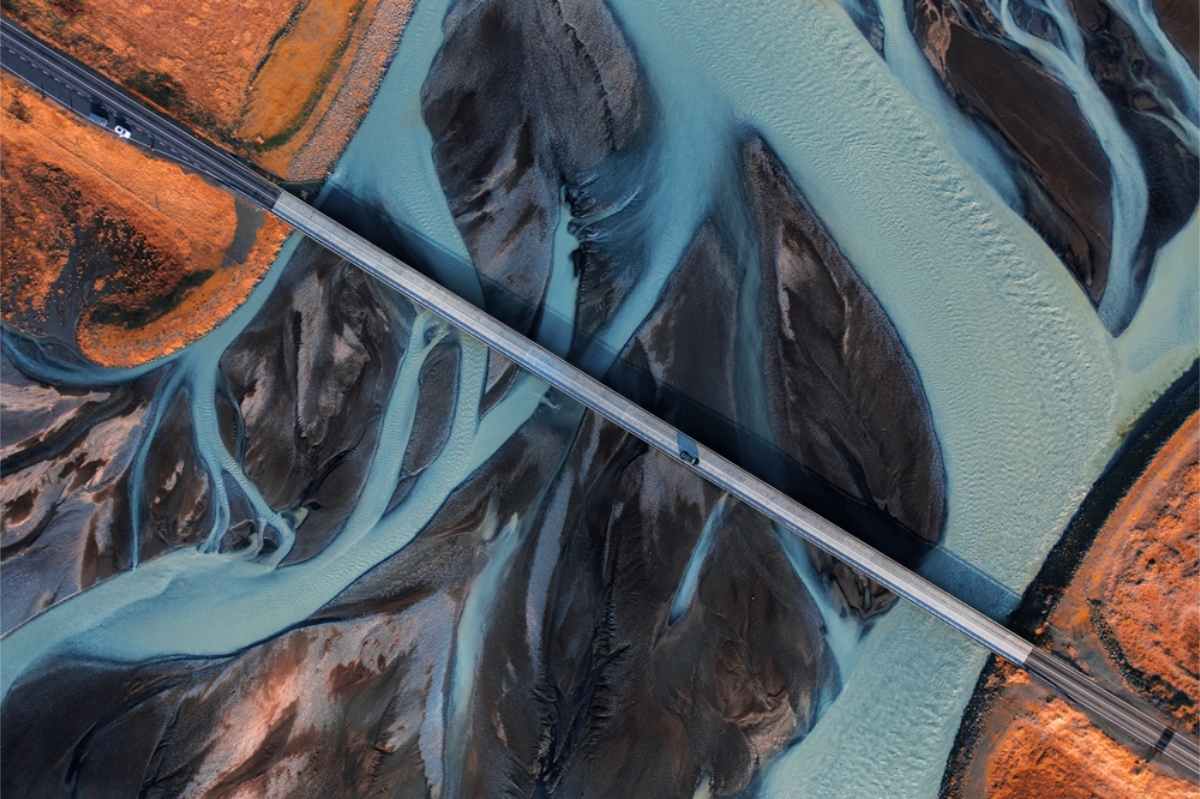
How Much Can You Save by Traveling in the Off-Season?
If one compares the peak season to the off-season, savings can be pretty jaw-dropping. In some cases, savings can reach 50%+! Although prices between the various service providers and rental agents can vary greatly, we took a few averages of the most common Iceland holiday expenses to compare, just to give you an idea of the difference in price range between the seasons:
- Flights: Cost between $500 and $900 for a round trip during our peak summer season. During the off-season, this price range can drop to between $200 and $450!
- Hotel Stays: Easily cost from $250 upwards per person per night during our peak summer season. However, during the off-season, you’re looking at $90 and $140 per person per night!
- Campervan Rentals: Cost between $150 and $250 per day during our peak summer season. During the off-season, this price range can drop to between $50 and $75! Please keep in mind that prices do not include gas. You also need to keep in mind that by renting a campervan, you’ll be saving on accommodation and food costs (but more on this in a bit).
Why Renting a Campervan Makes Iceland Cheaper
There are a number of things that make renting a campervan in Iceland a cost-effective option:
Save on Accommodation and Meals
You’re dealing with a two-for-one combo deal when renting a campervan in Iceland since you would’ve taken care of both your transport and accommodation. And since you’ll be traveling around the island with your home, you’ll only need to pay for a parking spot or camping spot in one of our super affordable camper parking lots or campsites.
If you travel during our warmer months, you’ll also be able to use our Camping Card. This card gives a family consisting of 2 adults and four children access to numerous campsites around the country for up to 28 nights.
To calculate a rough estimate in regards to the savings a Camping Card gives you, you need to consider that a Camping Card will cost you €179, and without it, campsites will charge you around $20 per person per night. Even if you work on the basis of a single individual, you’ve already made a killing.
To give you even more bang for your buck, the Camping Card also offers other discounts, the most important of which is on refuels! Most campervans also come with a kitchen (whether a tiny kitchenette setup to a full kitchen setup), which means that you can buy groceries and make your own budget-friendly meals, saving you the money you would’ve spent on dining out, getting takeaways, or buying ready-made meals.
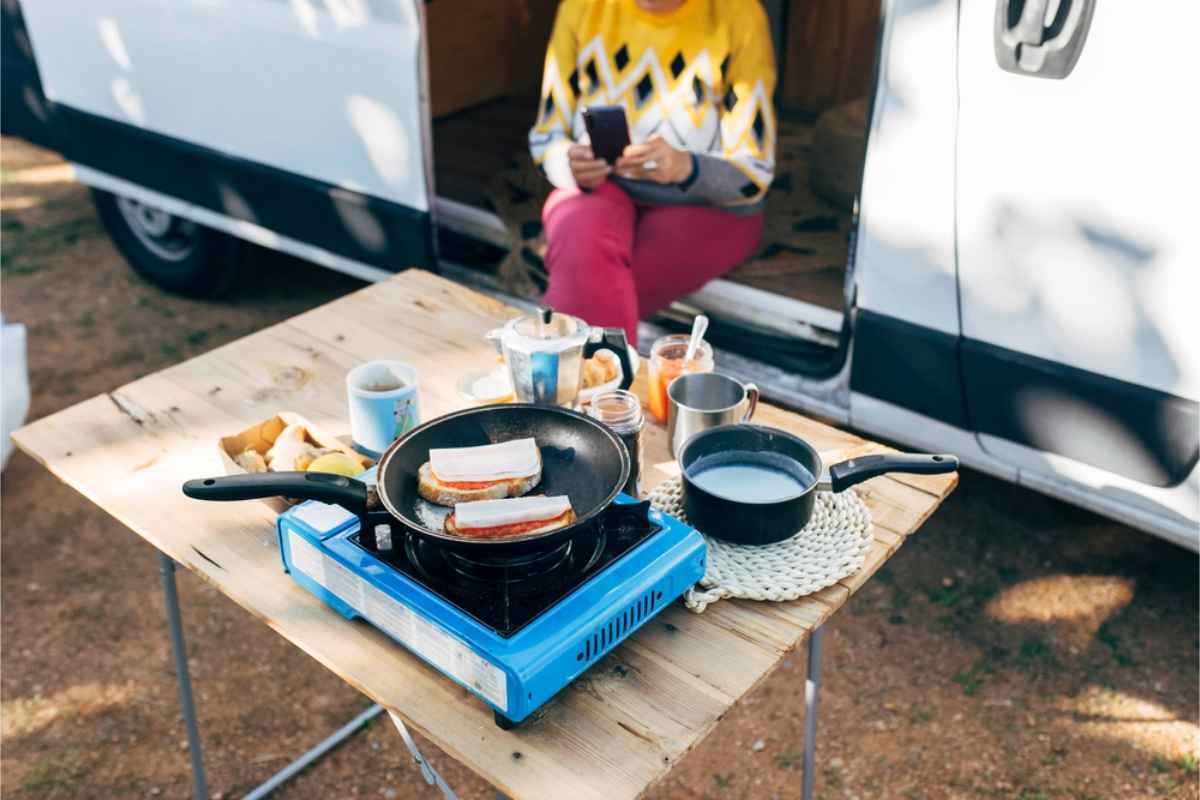
Flexibility to Avoid Costly Tourist Traps
A campervan rental also comes with a couple of bonus perks in terms of flexibility and some of the island’s more costly tours. This includes the following:
- Renting a campervan means you are the captain of your Iceland adventure; no one else can tell you what to do, where to go, or when (which is very much a tour in a nutshell).
- You only share your personal space in a camper with your nearest and dearest, whom you chose to go on this Iceland adventure with. On a tour, you have to share space with a bunch of strangers.
- Tours tend to focus only on the popular mainstream tourist hot spots and often miss those local hidden gems. Not only does that mean tour-goers miss out on some pretty incredible scenes and experiences, but it also means that they end up spending more money due to the popularity of these tourist attractions.
- A camper extends your affordable Iceland getaway period. It’s clear that our camping is our cheapest accommodation option, but traditional camping is extremely vulnerable to the weather and changes of the season. However, since a camper offers much better shelter and includes all sorts of creature comforts like heating, it’s possible to still go camping in your camper before the official camping season starts, as well as after it’s essentially ended.
- A camper opens up the world to a more impromptu, spur-of-the-moment trip itinerary. Since you can just park at a camper parking lot or camp at a campsite, you don’t have to be dictated by pre-booked accommodation check-in times and so forth.
What to Expect: The Weather, Road Conditions, and Daylight Hours in Iceland Explained
We’ve already included a lot of this information in our comparison table at the start of this article, but here’s what you need to know when it comes to the weather, road conditions, and daylight hours of the various seasons here in Iceland:
The Weather
The weather in Iceland is not just about having fun in the sun. The weather has a profound impact on our roads here in Iceland, and it also dictates many of our most exciting activities and sights, as well as our famous natural phenomena. Here’s how our off-season periods compare to our summer peak season:
|
Season |
Temperature |
Wind Speeds |
Rainfall |
Snowfall |
|
Summer Peak Season |
10 – 13 degrees Celsius (50 – 55 degrees Fahrenheit) |
+/-13.6 km/h (8.4 mph) |
50 – 61.8 mm (1.9 – 2.4 inches) |
None |
|
Winter Off-Season |
-2 – 3 degrees Celsius (28 – 37 degrees Fahrenheit) |
22 - 26 km/h (13.7 – 16.1 mph) |
72.5 – 71.8 mm (+/-2.8 inches) |
87 – 232 mm (8.7 – 23.2 cm) |
|
Shoulder Months Off-Season |
April to May = 0 -10 degrees Celsius (32 - 50 degrees Fahrenheit) September to October = 7 – 2 degrees Celsius (45 - 36 degrees Fahrenheit) |
April to May = 20 – 13 km/h (12.4 – 8.4 mph) September to October = 17 – 17.6 km/h (10.5 – 10.9 mph) |
April to May = 58.3 – 43.8 mm (2.3 – 1.7 inches) September to October = 66.5 – 85.6 mm (2.6 – 3.4 inches) |
Mere flurries of snow are still possible in April and October, especially in our northern regions. |
For up-to-date information on our weather conditions and forecasts, please keep an eye on Vedur.
Daylight Hours
Please refer to our comparison table for details. However, the most important thing to note in terms of daylight hours is that the shoulder months are best (especially May and September) for a jam-packed trip itinerary or a road trip around the country.
The winter season simply has too few daylight hours to try and cram everything in (unless it’s indoors and well-lit, of course), and even though the roads in our cities and towns are well-lit, the roads on the outskirts are not. Given the conditions of the roads during the winter, it’s definitely not advisable to try and traverse them in the dark.
Road Conditions
When it comes to the road conditions during our off-season, you need to keep the following in mind:
- Our main roads are paved and well-maintained and therefore can be driven throughout the year. This includes roads and routes such as the Ring Road, the Golden Circle, and the South Coast Way.
- The north of the island will always be colder and hit harder by our more extreme weather conditions, so plan accordingly when heading that way and keep things flexible so sudden road closures don’t completely derail your entire trip.
- Winter road conditions can be extremely challenging, especially if you’re not used to conditions including ice and snow, or when you consider yourself to be a bit of a nervous driver.
- The only times you might catch all roads and routes open when traveling during our off-season are late May and mid-September, since that’s when our annual road closures begin opening up again. This means that places such as the Highlands and the Westfjords won’t really be accessible to those traveling during the cheapest times to go to Iceland.
- For real-time updates and warnings regarding the road conditions around the island, please keep an eye on Umferdin and download the SafeTravel app.
Some of the Best Off-Season Activities in Iceland
You will find a myriad of interesting things to see and do here in the Land of Fire and Ice (yes, even during our off-season). Here are a few you can consider adding to your trip itinerary:
Hunting Down the Northern Lights in Your Camper
Renting a camper in Iceland during the winter season or during the shoulder months of early April or late October means you can hunt down our Northern Lights and literally overnight with them dancing across the skies overhead. Remember that the Northern Lights only appear under particular conditions, which include dry and cold air with minimal light pollution (so proper darkness).
Under these conditions, if you drive out and overnight at places such as Thingvellir or Snæfellsnes Peninsula, you can spot the Aurora Borealis without having to pay for a private tour guide or a spot on a guided tour. Hot tip: Vedur gives much more than just weather forecasts; it even offers Northern Lights predictions!
Geothermal Baths and Hot Springs
Iceland is famous for its hot springs, which are caused by the volcanic activity heating up our underground water supply. They can essentially be found in two forms here in Iceland: in their original and natural settings or utilized in our geothermal pool resorts.
If you’re looking for a cheap trip to Iceland, our geothermal pool resorts like the Blue Lagoon and the Myvatn Nature Baths should probably not be your go-to unless you get a massive off-season special. However, we have plenty of natural hot springs you can use completely free of charge or for only a small donation. This includes hot springs such as Seljavallalaug, Gudrunarlaug, and Hveravellir.
The good news is that our hot springs are also open all year round, and if you ask the locals, many believe the best time to take a dip is when you can soak in the warm healing waters with the cold air hitting your face. It’s also common practice here, especially among our youngsters, to take hot spring dips during winter with quick intermissions of rolling around in the cold snow draping the surrounding landscape.
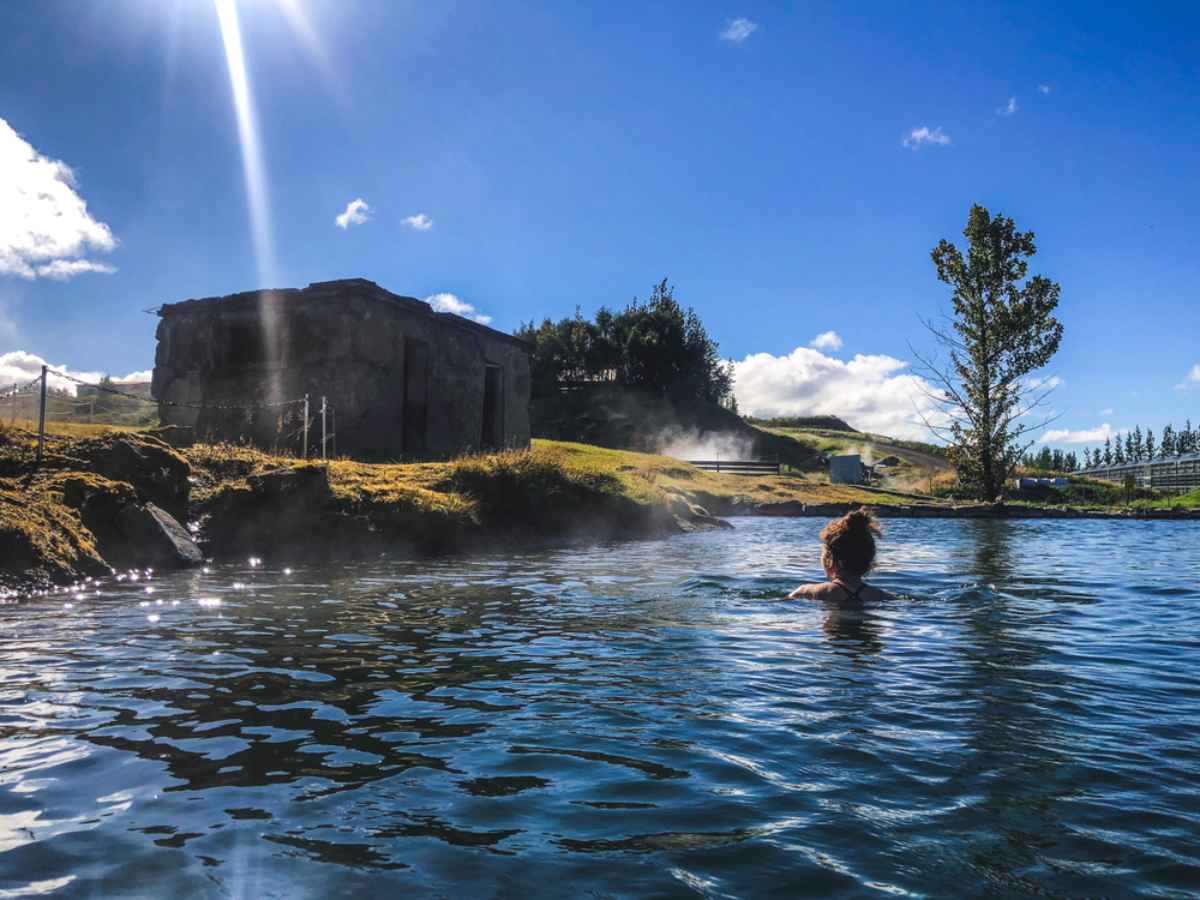
Wildlife Watching and Scenic Drives
You can find various free-roaming wildlife here in Iceland all year round. However, in typical Mother Nature fashion, our critters tend to retreat whenever areas become too busy during the peak season, which already increases your chances of seeing our wildlife when visiting during our off-season.
At the same time, you’ll also have the additional perks of spotting some of our extra special visiting wildlife mentioned in our comparison table above. Just like our wildlife can appreciate less busy areas, you’ll also appreciate our scenic roads and routes without the additional traffic during our off-season. Just keep in mind that our free-roaming wildlife can also cross paths (quite literally) with you here, so always stay alert.
Visiting Popular Attractions Without the Crowds
As we already mentioned, if you’re looking for a budget-friendly trip to Iceland, visiting our more famous and more expensive tourist spots might not be the way to go, but there are plenty of our other famous sights that are completely free of charge, and you can only benefit from during the off-season when the peak season crowds have subsided.
Incredible places such as Seljalandsfoss Waterfall and Reynisfjara Black Sand Beach can be explored without feeling like you’re in the Hunger Games to catch a glimpse or just not feel like you’re getting squashed.
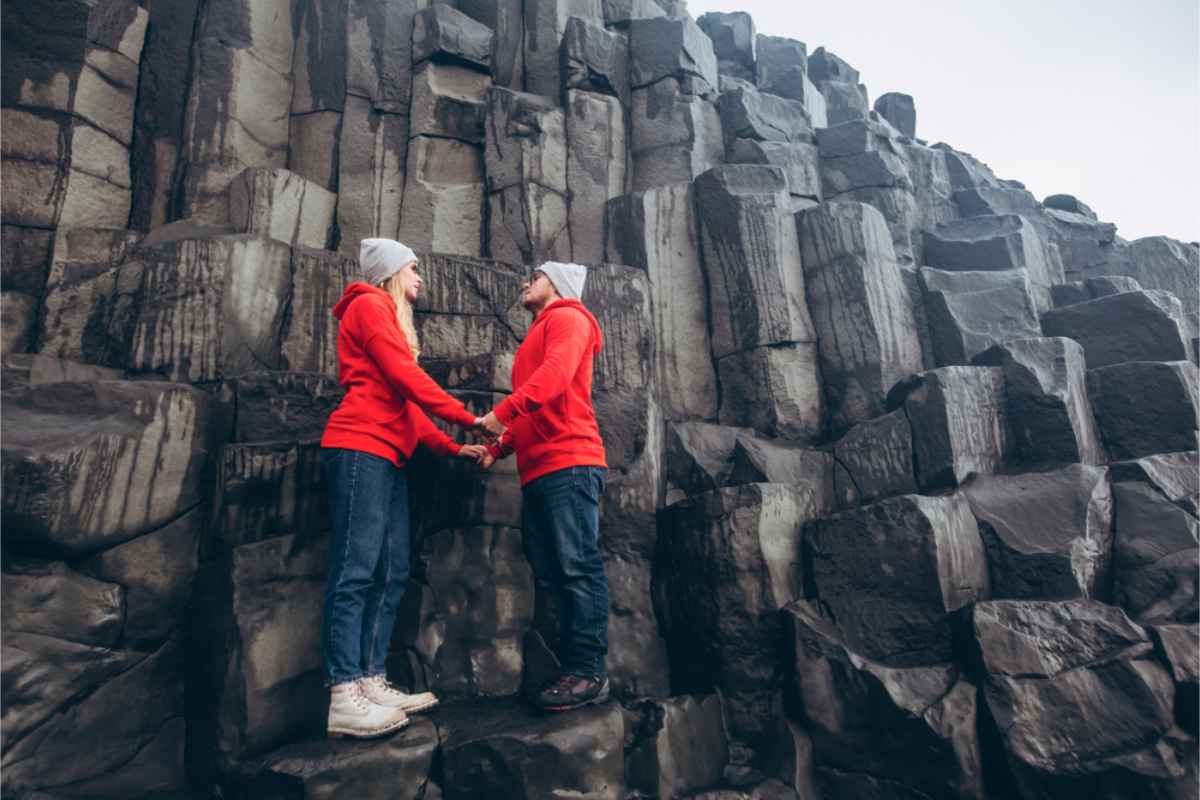
Budget Tips for Camper Travel in Iceland
Here’s some advise on maximizing your savings:
Finding the Cheapest Camper Rental
There are a couple of ways you can get the best price for your camper rental:
- By booking in advance (anything from 3 to 8 months will give you a more budget-friendly price).
- By making long-stay bookings. Generally, you will get a bit of a discount if you book a camper for a longer period of time.
- By keeping an eye out for those off-season specials.
Camping Card and Free Campsites
We already mentioned the fantastic savings you can get from buying the Camping Card. Just keep in mind that the card is only valid from May to September. Another card that can give you quite a few discounts on attractions and activities is the Reykjavik Card (and this one is not restricted to a specific time period).
We also mentioned that some campsites close during our colder months. However, there are over 25 campsites that remain open throughout the year in Iceland. Please ask your rental agent if they have a list they can give you. It may also be tempting to simply find yourself a nice spot to park your camper overnight, but wild camping in a camper has been illegal here on the island since 2015.
Still, if you can get the explicit permission from a land owner, you will be allowed to stay on their land for up to 48 hours (which basically constitutes free “campsites”).
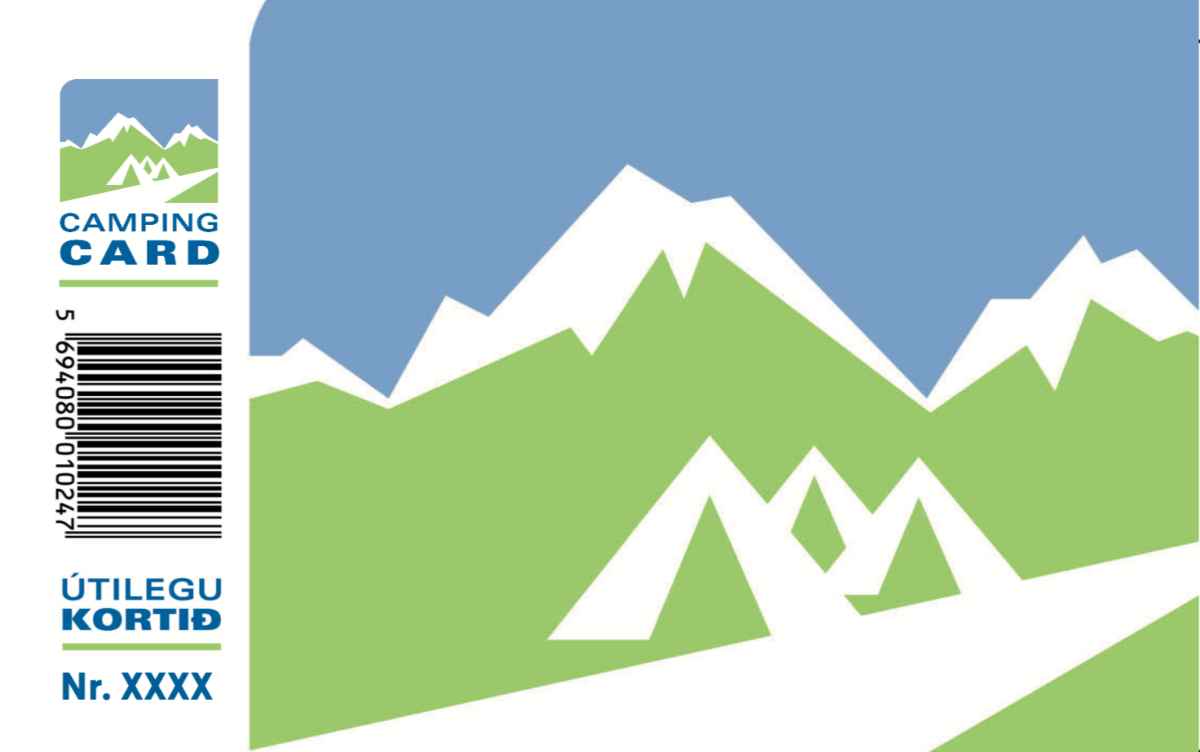
Packing Essentials for Spring or Autumn Camping
Our off-season months fall in either the spring or autumn camps, and with the strange mix of weather conditions and available activities of these in-between seasons, there might be a few things you haven’t thought about regarding your packing list for your campervan road trip around Iceland:
- Pack clothes you can layer. This way, you’ll be prepared for all weather conditions and changes. Thermal underwear, t-shirts, long-sleeved shirts, sweaters, and jackets mean you’ll always have something to put on or take off based on the situation.
- Bring extra blankets or sleeping bags, especially during the winter months.
- Pack an emergency first-aid kit.
- Bring a flashlight or headlamp (we recommend a headlamp so you can keep your hands free).
- Bring plenty of chargers, cables, and power banks for your essential electronics. Many don’t know that the cold in Iceland actually depletes batteries quicker.
- Download a few offline Google Maps and also bring a few hard copy maps (for those times that tech and signals fail you).
- Remember to stock up on groceries and other essentials in the bigger cities and towns, and also have a few extra rations of water and snacks that can’t spoil easily (such as energy bars and dried fruit), for those emergency situations. Hot tip: Try to buy only groceries from Kronan and Bonus, since they are our most budget-friendly grocery stores here on the island.
- Pack your swimwear and quick-drying towel (our hot springs are not limited by seasons).
- Bring flip-flops. This is yet another very counterintuitive item, but they become invaluable at our hot springs and public showers.
- Always bring waterproof clothing and gear, as well as a raincoat, when you’re visiting the island during the shoulder months of the off-season. This is not just to keep dry during any potential rainfall, but also to stay dry during visits to our waterfalls, where the mist and spray can leave you drenched!
- Pack waterproof hiking boots with good grip, irrespective of the season. Whether you’re bracing wet, muddy trails or trudging through snow and ice mid-winter, you’ll thank us.
Final Thoughts: Is It Worth Visiting Iceland in the Off-Season?
Visiting during the cheapest time to go to Iceland is definitely worth it! Exploring our breathtaking landscapes without any crowds, side-stepping those pesky peak season prices, getting many of the perks of either winter or summer without any of the drawbacks – what more could you ask for?!
Ready to Go? Rent Your Camper and Hit the Road!
Now that you’ve received the local lowdown on the cheapest time to go to Iceland and have a budget-friendly camper road trip, it’s time to properly plan, prep, and book so you can rent a campervan in Iceland and officially come kickstart your adventure here.
Just remember that the cheapest time to fly to Iceland will always be in November, January, February, or April during our off-season. We can’t wait for you to experience the island in the most cost-effective way. If you follow our guidance, you can have a budget-conscious trip that will result in absolutely priceless memories, so happy travels!

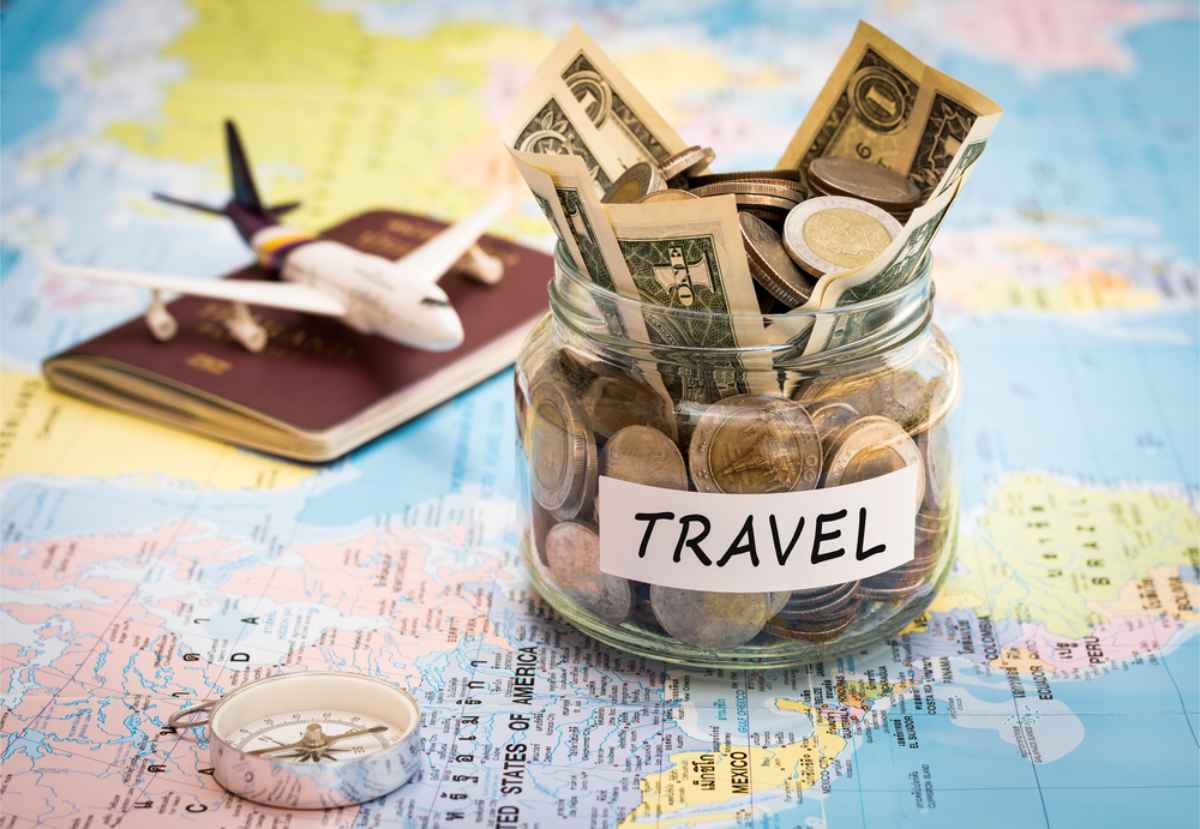
 By
By


